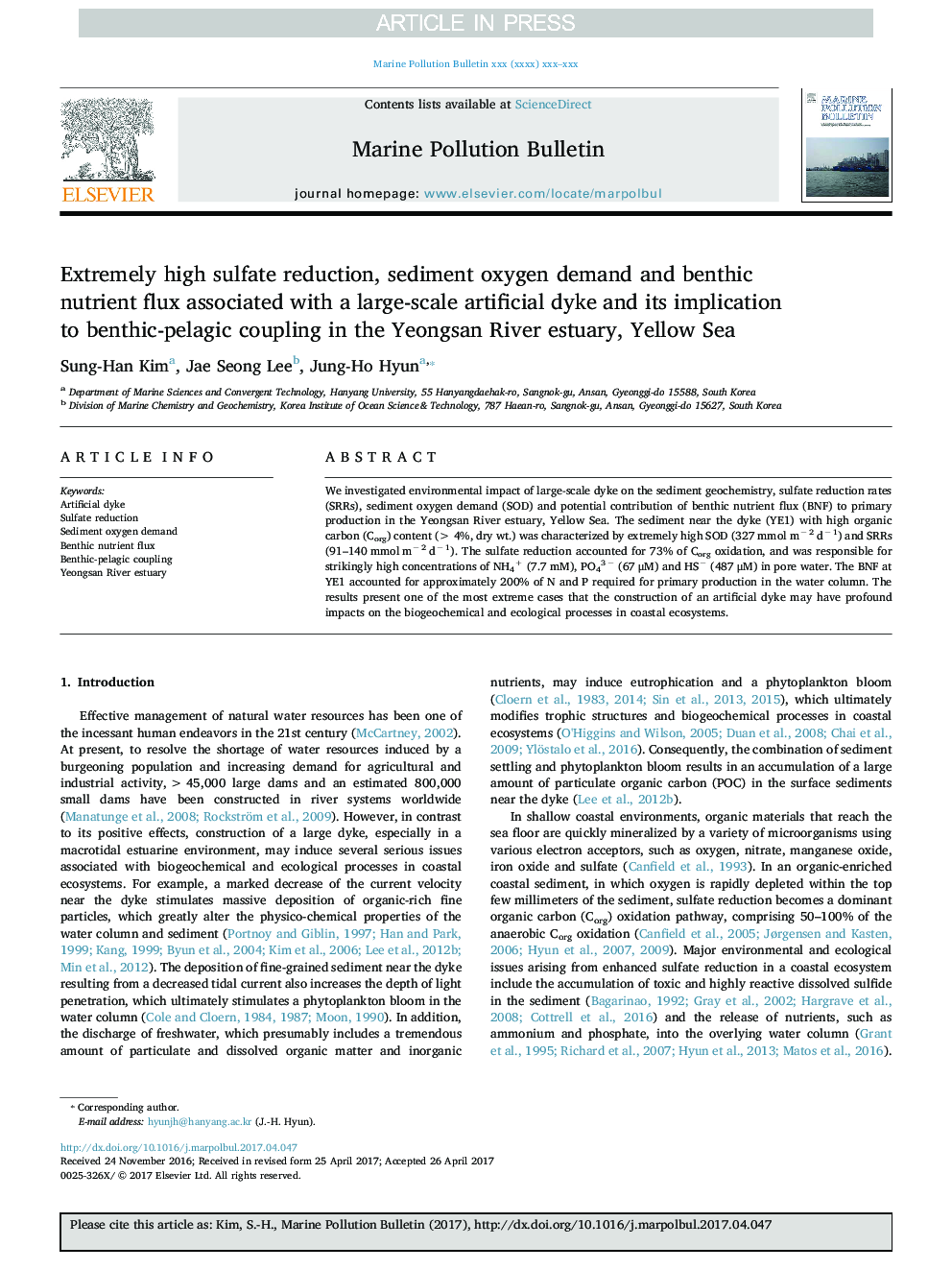| Article ID | Journal | Published Year | Pages | File Type |
|---|---|---|---|---|
| 5757655 | Marine Pollution Bulletin | 2017 | 10 Pages |
Abstract
We investigated environmental impact of large-scale dyke on the sediment geochemistry, sulfate reduction rates (SRRs), sediment oxygen demand (SOD) and potential contribution of benthic nutrient flux (BNF) to primary production in the Yeongsan River estuary, Yellow Sea. The sediment near the dyke (YE1) with high organic carbon (Corg) content (> 4%, dry wt.) was characterized by extremely high SOD (327 mmol mâ 2 dâ 1) and SRRs (91-140 mmol mâ 2 dâ 1). The sulfate reduction accounted for 73% of Corg oxidation, and was responsible for strikingly high concentrations of NH4+ (7.7 mM), PO43 â (67 μM) and HSâ (487 μM) in pore water. The BNF at YE1 accounted for approximately 200% of N and P required for primary production in the water column. The results present one of the most extreme cases that the construction of an artificial dyke may have profound impacts on the biogeochemical and ecological processes in coastal ecosystems.
Related Topics
Physical Sciences and Engineering
Earth and Planetary Sciences
Oceanography
Authors
Sung-Han Kim, Jae Seong Lee, Jung-Ho Hyun,
